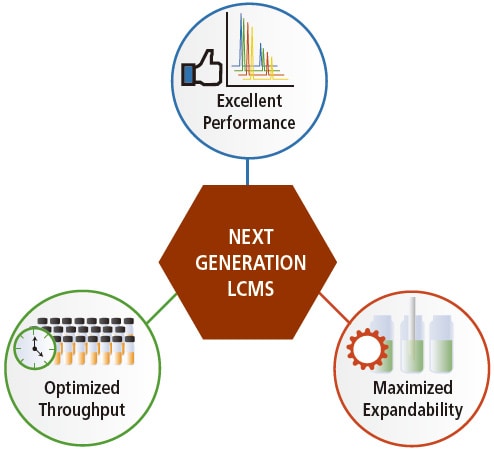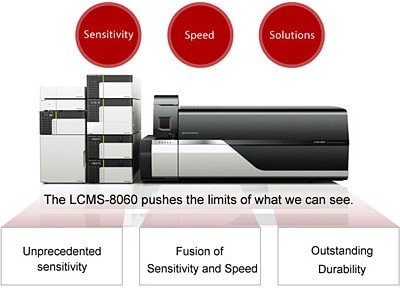Analytical challenges and current limitations of LCMS

Since its introduction, LCMS has proved to deliver high quality data and robust performance. As discussed in earlier chapters, LC and MS technologies have evolved to meet the needs of the industries. With these dynamic developments, the demand for these techniques for both quantitative and qualitative analyses have increased and LCMS has progressively become an essential and routine analytical instrument in many sectors. It has established itself to be a key tool in clinical, pharmaceutical and biopharmaceutical industries for drug discovery and protein analysis. It has also set foot in other applications such as food safety and development, environmental, energy and chemical.
These industries are also constantly evolving and their demands are growing. Some of the main issues faced by the industries include having complex sample matrices, trace-level analytes, multiple component analysis of targets and unknowns, and complicated and timeconsuming sample preparation procedures. Thus, there are needs for more advanced instruments or software that give higher throughput, greater efficiency, lower limits of detection, higher mass accuracy and more user-friendly interfaces.
Besides working to meet these needs, LCMS providers are also striving to improve their analytical products in terms of its throughput, performance and expandability in areas such as:
- a) To increase the efficiency and reproducibility of the ionization process
- b) To create an efficient LCMS interface and ion optics
- c) To reduce unnecessary matrix effects (unwanted suppressions and enhancement)
- d) To minimize sample carryover or crosstalk*8 effects
- e) To increase the efficiency and reproducibility of the fragmentation in collision cell
- f) To enable sufficient chromatographic separation
- g) To provide more options and flexibility in terms of LCMS sample preparation and analysis
These parameters affect the LCMS results. By optimizing these processes, the ion abundance and signal-to-noise ratio will increase and there will be lesser contamination issues. In summary, LCMS manufacturers are looking to achieve these key end-outcomes: high sensitivity, efficiency, reproducibility and durability, and producing a simple and easy-to-use LCMS instrument.
*8 Crosstalk may occur during MRM analysis where the product ions of the previous MRM transition (residual product ions in the collision cell) is erroneously detected as product ions of the next MRM measurement.




